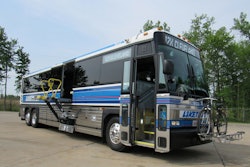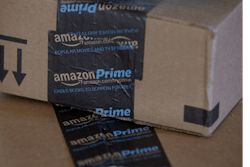
The importance of the aftermarket is growing. In fact, a recent report by Deloitte Consulting states: “The spare parts business is considered the main driver to enhance customer satisfaction and generate repurchase opportunities.”1 Forward-thinking companies are implementing increasingly sophisticated logistics networks to capture market share and increase profitability through the optimization of service parts pricing and availability. Yet, many organizations continue to leave cash on the table even though tools to manage the aftermarket are easier to access and use than ever before. Why? The answer is simple—inertia, or the inclination to remain unchanged.
Accenture, a global professional services company, believes businesses fail to make pricing a priority for many reasons, such as resource shortages, parts overload and knowledge drain. However, inertia seems to be one of the biggest challenges to overcome. Only those who can combat the this-is-how-we-always-do-things-here attitude can seize the cash that is otherwise being left behind or won by other suppliers.
And there's a lot of cash to seize! Accenture estimates a 1 percent improvement in price creates a 19 percent improvement in operating profit. To put things in perspective, 1 percent improvements in variable cost, volume and fixed costs deliver operating profit improvements of 11 percent, 4 percent and under 1 percent, respectively.2
Most pricing initiatives take less than six to 12 months to pay off. Nonetheless, many manufacturers do not realize their full potential because inertia gets in the way. For example, aftermarket parts pricing is traditionally based on a cost-plus approach in which a fixed margin is added to manufacturing costs. Cost-plus is a comfortable idea that is easy to facilitate so businesses stick with it. But the approach is expensive. It compromises both profits and brand equity because it fails to take criticality or emotion into account during purchase decisions.
A customer may care little about the name brand of new windshield wipers; he or she simply wants a quick fix when needed. On the other hand, if the finely tuned engine of that same customer's luxury vehicle begins to break down, he or she will most likely seek out one brand of replacement parts—the original—and pay more for them.
Companies fail to optimize aftermarket pricing in other ways as well. They may:
- Employ manual processes, which make it difficult to change prices frequently.
- Respond slowly to changes in the market.
- Fail to account for market dynamics, such as actual street prices, relative price sensitivity, price leadership and captive versus competitive reasoning.
- Price inconsistently, jeopardizing brand image and impact.
These challenges are not insurmountable, though. Businesses simply need to overcome inertia and tackle them boldly. Science in pricing can help uncover valuable opportunities for growth. After all, more than 25 percent of a manufacturer’s revenue should be generated by aftermarket sales that contribute to approximately 50 percent of profits.
Manufacturers can reap great rewards by implementing a dedicated service parts pricing solution. With automation, most can:
- Increase service revenues by up to 5 percent and gross profit margins by more than 7 percent.
- Accelerate reactions to market and competitive changes.
- Identify both underpriced and overpriced parts more quickly.
- Improve negotiations with suppliers.
- Have greater visibility into local pricing and market trends.
Technology is transforming the aftermarket service parts industry. Those of great vision, wisdom and courage are embracing innovative software solutions to make the leap from laggard to leader. It's a smarter, more efficient approach shareholders can't help but applaud.
[1] “Driving Aftermarket Value: Upgrade Spare Parts Supply Chain”, Deloitte China Auto Industry Spare Parts Management Benchmark Survey White Paper, p. 3
[2] “Paying the Price of Inaction? Why Original Equipment Manufacturers Must Reinvent Competitive Parts Pricing”, Accenture, p. 4
















